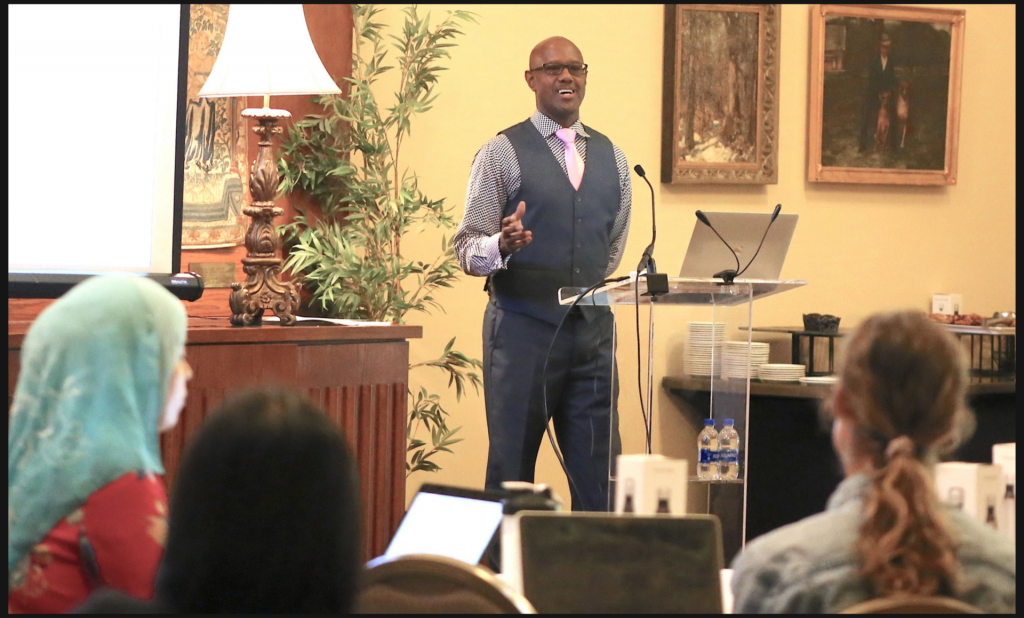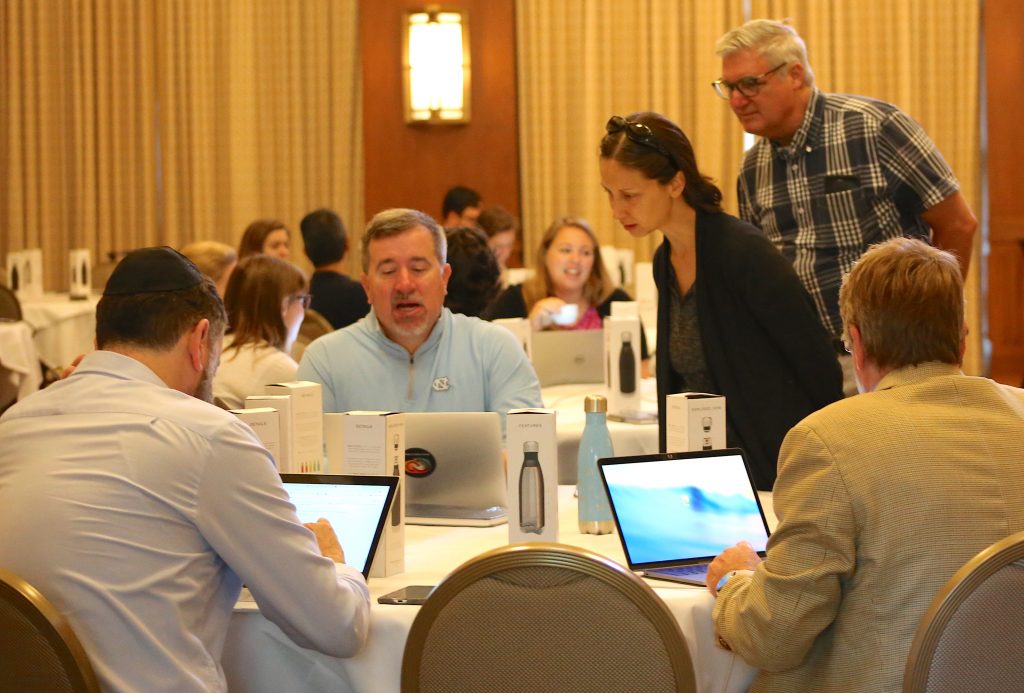At a 1 1/2-day workshop organized by ITS Research Computing and Adobe, experts encouraged young researchers to magnify the reach and impact of their research by applying visual media to communicate their work.

Three dozen Carolina graduate students and post-docs, who were selected from among 121 applicants, attended the free workshop on September 24-25 at the Carolina Club. Attendees came from Education, Computer Science, Pharmacy and other schools across campus.
Adobe enlisted experts to demonstrate and teach sessions on Adobe Creative Cloud digital media tools. University Libraries staff provided hands-on assistance. Journalism professor Terence Oliver delivered the keynote while J. Michael Barker, Interim Vice Chancellor for IT and Chief Information Officer, provided the opening remarks. Professor Todd Taylor, who is on leave from UNC-Chapel to work with Adobe, also presented.

Organizers pleased by feedback
“I am so proud that ITS could deliver this workshop to provide our graduate students and post-docs with tools and techniques they can use in their work immediately,” said ITS’ Scott Jackson, who organized the event with Mark Reed of Research Computing. “Multiple participants told me this is exactly what they needed and that they will change the way they communicate their research and teaching accordingly.”
Attendees learned about individual Adobe Creative Cloud tools and received some hands-on training in breakout sessions on Photoshop, Spark, InDesign and Premiere. Adobe enlisted four experts to teach the sessions, including Eric Cornish, a graphic design professor from Miami Dade College, who is an official Adobe Education Leader.

Workshop inspired attendees
Participants offered positive feedback at the conclusion of the event. About half of attendees filled out the survey. All of the respondents said they would use Adobe tools in the future and were very likely to look for more opportunities to learn more Adobe or other media design tools.
The breakout sessions, meanwhile, received high marks, with Photoshop being rated most highly, then Spark and InDesign.
“I really liked hearing from both keynote speakers,” one respondent said. “I felt like it was great to see the possibilities of what we could do using Adobe products. I was inspired to figure out how to best tell my story.”
Another said, “Very cool. Made me excited about my research and how I could use these tools to communicate my science to a range of audiences.”
Other respondents appreciated the introduction to these tools and seeing examples of what they can create with them. They said they’d use some of these digital tools for research projects, posters, grant proposals, instructional materials, websites to showcase their work, among other uses.
